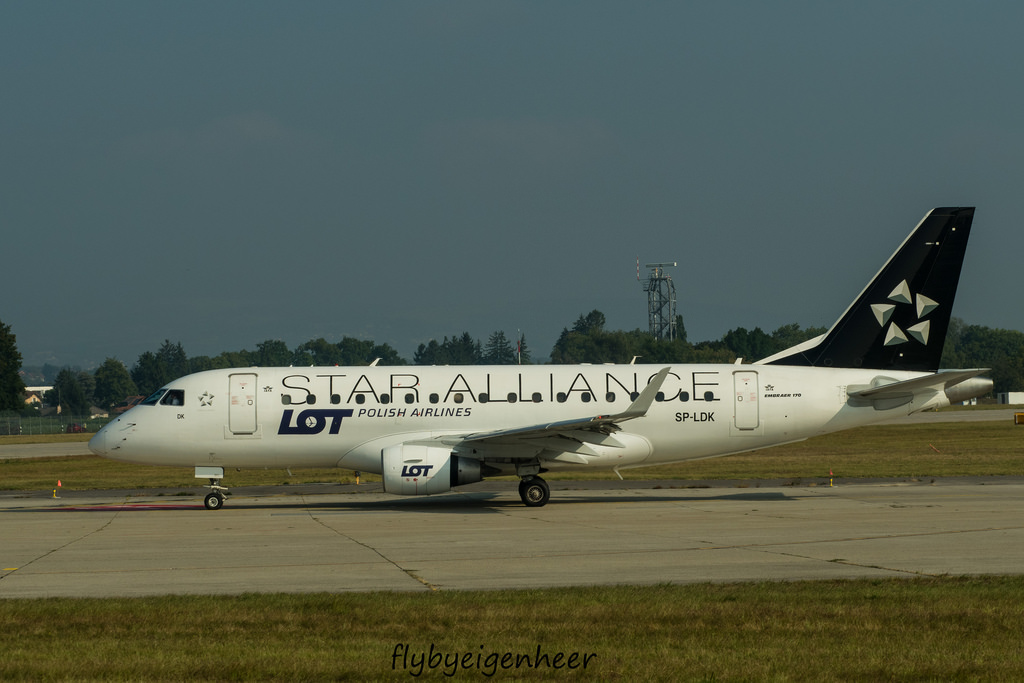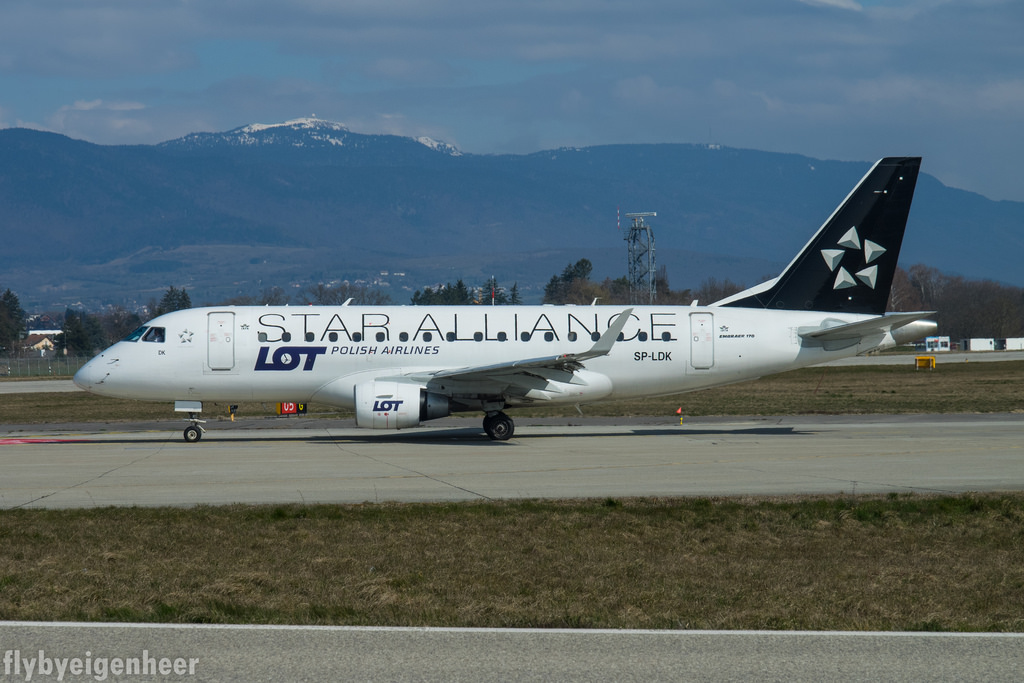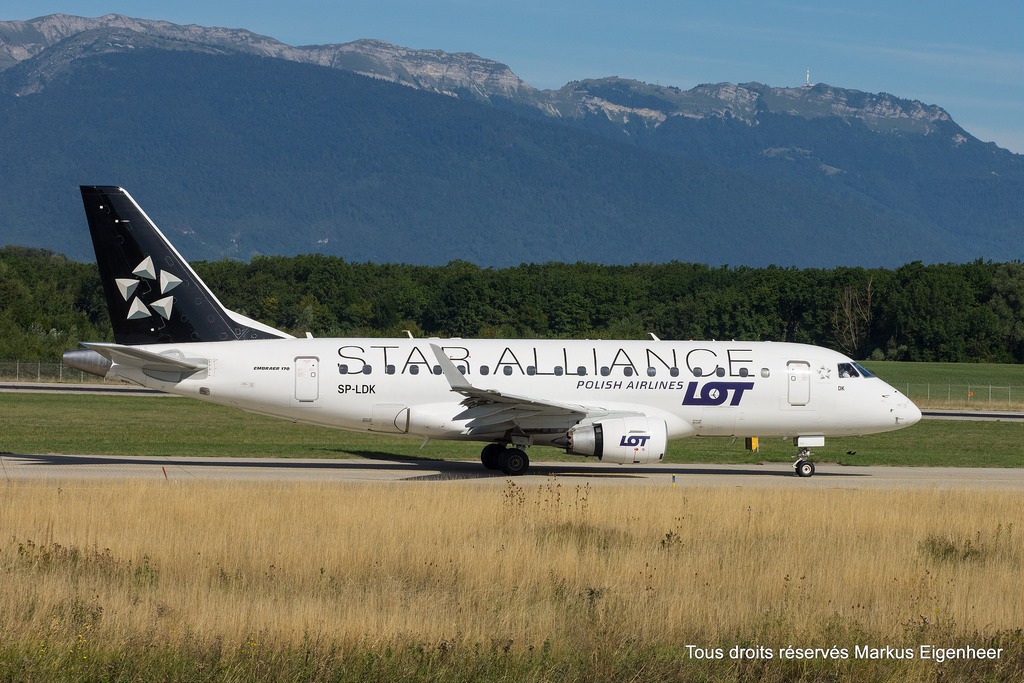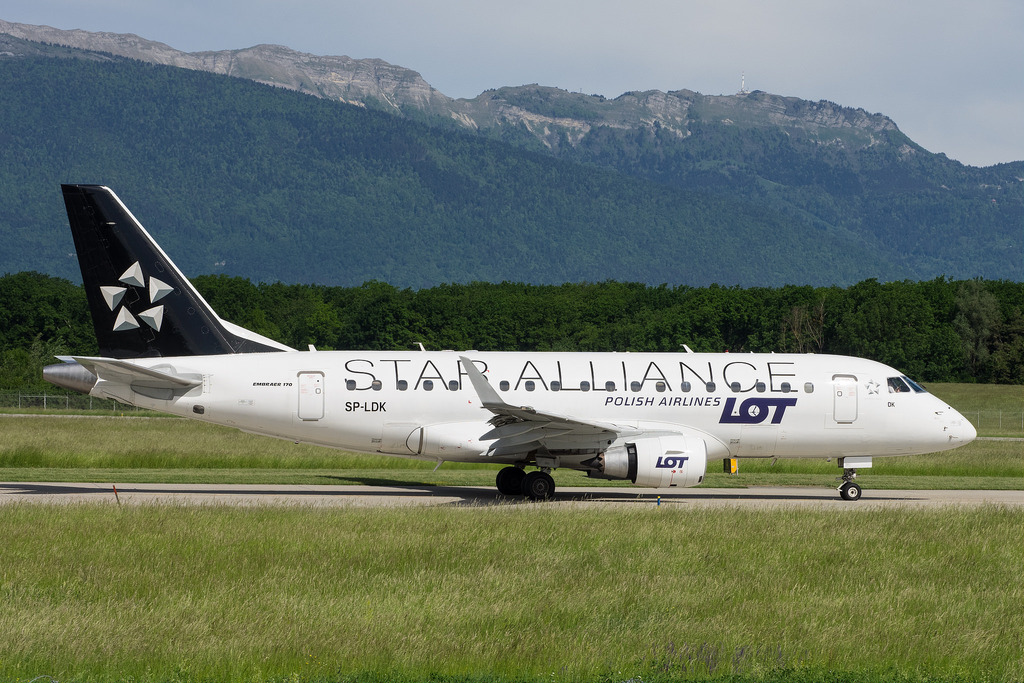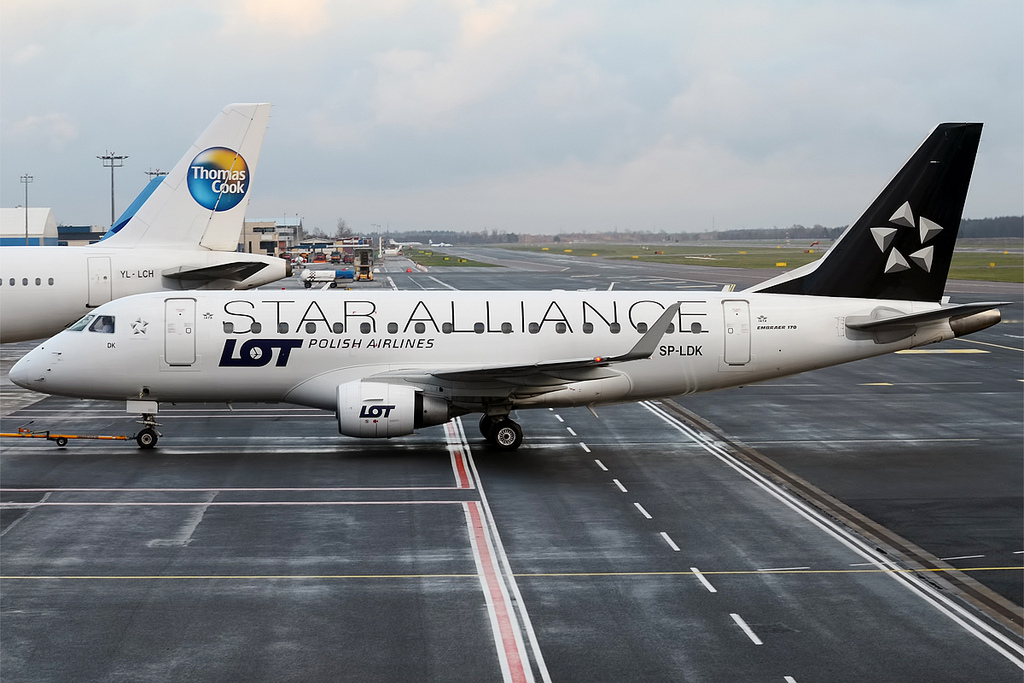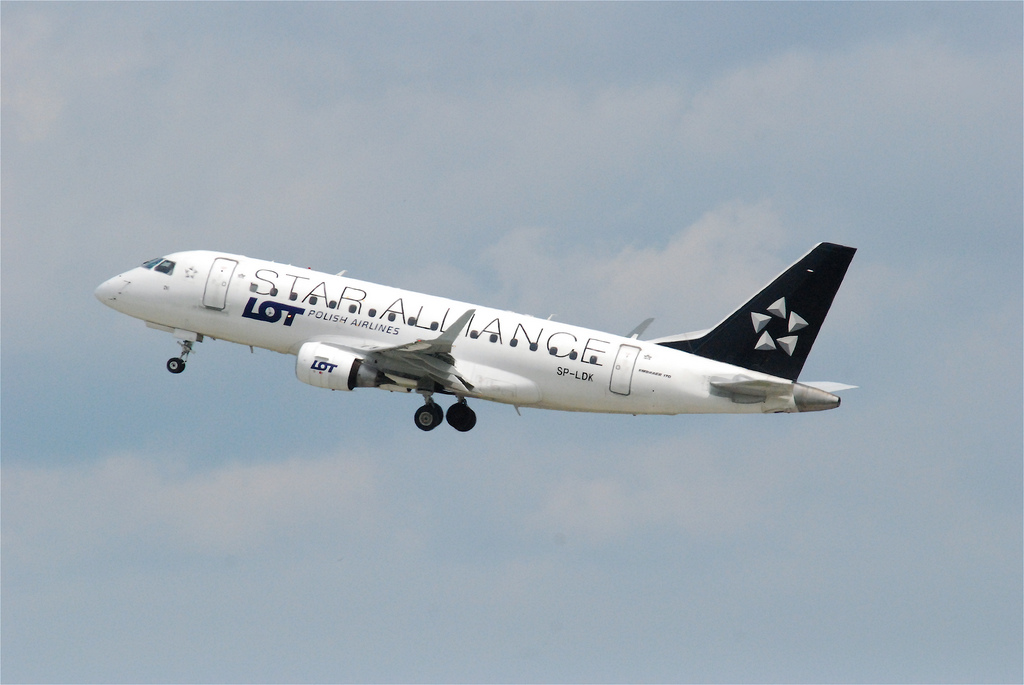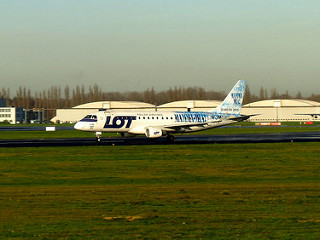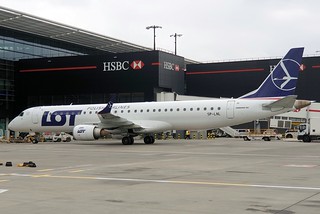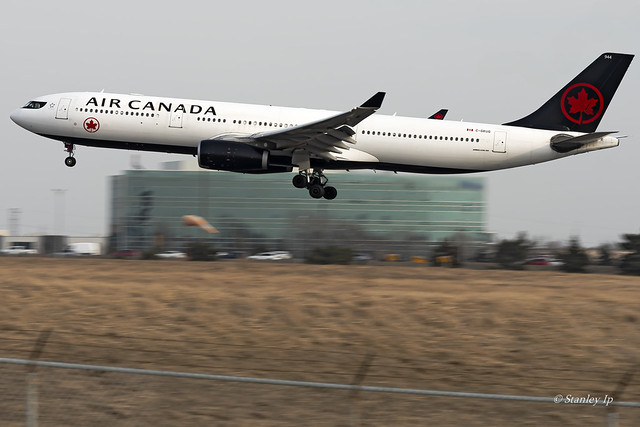LOT E170 near Varna on Jun 30th 2015, transponder inadvertently off results in near collision with business jet
Last Update: January 28, 2017 / 23:48:47 GMT/Zulu time
Incident Facts
Date of incident
Jun 30, 2015
Classification
Report
Airline
LOT Polish Airlines
Flight number
LO-7293
Departure
Warsaw, Poland
Destination
Istanbul, Turkey
Aircraft Registration
SP-LDK
Aircraft Type
Embraer ERJ-170
ICAO Type Designator
E170
A Falcon 900 business jet, callsign WGT62N, was enroute at FL370 tracking airway M859 on its way from Stuttgart (Germany) to Muscat (Oman). Airways N616 and M859 cross north of waypoint MATEL over the Black Sea before Varna (Bulgaria).
At 12:09Z Romania's Military Air Traffic Control inquired with the Supervisor of Bucharest Control, whether they had an aircraft enroute without transponder. A discussion ensued between the various sectors in Romania whether they had LO-7293. In the meantime a NATO AWACS (NATO07) picked up the primary target, at 12:21Z the civil supervisor requested NATO07 to provide data of the primary target including altitude, position and track. The data by NATO07 were relayed at 12:22Z at FL370, heading 170 and speed 170 knots, 30 seconds later the primary target was located exactly over DINRO waypoint with variable flight level.
At 12:22:48Z the ERJ-170 passed waypoint DINRO marking the airspace boundary between Romania and Bulgaria.
At 12:24:19Z the crew of LO-7293 reported on Bucharest Control "passing DINRO at FL370".
At 12:24:59Z Sofia Control advised the Falcon crew: "traffic information, 10 o’clock, 13 nm, unknown level, unknown traffic, crossing left to right". The crew subsequently reported they were able to see the traffic in far distance (at that point estimated about 10nm) and estimated the flight above them, possibly FL400.
At 12:25:29Z the E170 crew established contact with Sofia Control: "Dobar den Sofia Radar LOT 7293 maintaining level 370 to MATEL", the controller could not identify the radar target, queried callsign, location, level, which took until 12:27:42Z.
At 12:26:45Z the Falcon crew reported: "I had just seen the traffic and I do not have TCAS on him and he was crossing behind me above…and there was less than FL 400."
Later radar analysis suggests the two aircraft passed at 0 feet vertical and 0.9nm horizontal separation at 12:26:50Z.
At 12:27:42Z Sofia Control radioed the E170: "LOT7293 you have some problem with transponder. I don't observe your A and C Mode.", the crew acknowledged and checked.
At 12:27:55Z the transponder of LO-7293 activated again.
Bulgaria's Air Accident Investigation Unit (BAAIU) released their final report concluding the probable causes of the serious incident were:
Main cause
Unintentional interruption of the Air Traffic Service in regard to LOT7293 on the side of ACC Bucharest after changing of the aircraft transponder mode of operation to STANDBY, particularly in Bucharest Control BANAP sector, during the its flight in Bucharest FIR and later on in Sofia FIR.
Accompanying causes:
- Not implemented procedures by the flight crew of Embraer 170, registration marks SP-LDK, after the momentary failure of the transponder system.
- Not provided information in timely manner on the location, direction of flight and height of the unidentified aircraft by ACC Bucharest to ACC Sofia, previously received from NATO07.
- Not implemented procedures by ACC Bucharest from the LETTER OF AGREEMENT between BULATSA SOFIA ACC and ROMATSA BUCUREªTI ACC/CONSTANÞA APP.
* Transfer of Control
* Transfer of Communications;
* Transfer of Aircraft Identification.
The BAAIU reported the captain of the Embraer (47, ATPL, 12,100 hours total, 3,300 hours in command on type) was pilot flying, the first officer (45, ?, 4,600 hours total, 1,026 hours on type) was pilot monitoring.
The BAAIU described the failure mode leading to the inadvertent Standby of the transponder (editorial note: a grim reminder of the events surrounding GOL flight 1907, which crashed over Brazil after a mid air collision with an Embraer Legacy Business Jet the transponder of which had failed undetectedly, see Crash: GOL B737-800 overhead Brasil on Sep 29th 2006, collided with bizjet in flight):
During the occurrence the transponder of Embraer aircraft, registration marks SP-LDK, was provided with software Primus Epic Load, version 21.4.
Upon a momentary failure on the interface of the MRC (Modular Radio Cabinet), with this software version, displayed is a short-term caution message NAVCOM 1 (2) FAIL and the transponder returns to STANDBY Mode. The transponder stops transmitting signals to the ground ATCAS and the TCAS, the aircraft disappears from the screens of the Air Traffic Controllers, the safety system of the ground systems can’t be used efficiently by the Air Traffic Controllers, and the TCAS does not function.
The NAVCOM FAIL message results from restarting of the NIM (the Network Interface Module). The NIM is responsible for realization of connection between the ASCB (the Avionics System Data Bus) and the MRC. Switching-off of NIM is the cause for the occurrence of NAVCOM FAIL message on EICAS. This peculiarity of the system is known by Embraer and is reviewed in Technical Newsletter O. B. Nr. 170-008/07 DATE Dec 13, 2007, published by Embraer in December, 2007.
During re-starting of NIM, in the pilot’s cabin of the aircraft the following messages are displayed:
- NAVCOM 1 (2) FAIL message is displayed on EICAS for a short time, as well as the relevant warning “MASTER CAUTION”;
- on PFD and on the MCDU RADIO site, pertaining to COM, NAV and transponder window, displayed are dashes in the active fields of the preliminary selected frequencies and the squawk.
- After NIM restarting:
- the EICAS message disappears;
- on PFD and on the MCDU RADIO site, the affected COM and NAV frequencies return to their previous settings;
- the previous squawk returns on the transponder and the transponder switches to STANDBY mode;
- TCAS OFF is announced and displayed in the lower left angle of the attitude indicator of each PFD.
The interruption of NIM leads to the relevant failure of NAVCOM. This is included in the NAVCOM 1 (2) FAIL message.
During the momentary switch-off of NIM, the EICAS message is announced for a short period of time. Restarting of NIM lasts for 5 seconds, and the command for the last mode of the transponder in the memory is stored just for 3 seconds and the transponder switches to STANDBY mode, after re-starting of the system.
On December 13th, 2007 Honeywell published Technical Newsletter D200711000032, to inform the operators about the transponder’s behaviour associated with re-starting of NIM during flight, the measures to rectify the problem, and the recommendations to the flight crew on corrective measures upon the occurrence of such a situation.
The BAAIU analysed:
According to the explanations of the flight crew of LOT7293 with Embraer 170, the flight progressed normally until the aircraft entered the air space of Romania, where it was identified and radio communication with ACC Bucharest was established. Few minutes after flying over BUKOV point the EICAS (Engine Instrument & Crew Alerting System) displayed a NAVCOM 1 FAIL message, which disappeared one or two seconds after. The presence of the message on the EICAS display was short and the crew did not realise that the transponder had switched automatically to STANDBY mode. After the establishment of radio communication with ACC Sofia, the crew was informed on the absence of any indication from the transponder. That was the moment when the crew noticed the issue related to the transponder, after which its normal operation was recovered and the flight continued without further peculiarities.
...
LOT7293 entered the air space of ACC Sofia without operating transponder (without any information from Mode A/C) and without bilateral radio communication connection. The EXE ATC reacted timely requesting information about an unknown traffic with unidentified FL and started transmitting this traffic information to the aircrafts under his control. The flight crew of WGT62N was performing its flight at FL370 according to the flight plan and was following the instructions of the EXE ATC from FS Varna East-Upper. The EXE ATC warned the crew of WGT62N about the unidentified crossing traffic without radio communication and at an unknown FL. The crew of WGT62N informed the EXE ATC that TCAS did not depict any conflicting traffic, but the crew observed an aircraft flying above them at FL400 and did not ask for a change of the heading. In respond to the request of DINSI sector, PLN ATC of FS Varna East-Upper informed that he was asking for information about the unknown aircraft and its FL as well. The PLN ATC informed the Air Traffic Controller-Supervisor about the unknown aircraft who informed the Center for Coordination Use of Airspace (CCUA). Meanwhile the PLN ATC called the BUAF and communicated the same information. The EXE ATC considers the unknown aircraft to be “a Russian military aircraft” and because of the more frequent cases of such flights registered recently in the controlled air space of Sofia Control FS Varna he did not instruct the flight crew of WGT62N to change the heading after receiving information of the higher FL of the unknown aircraft.
At FS Varna East Lower, an OLDI ACT message was received about the flight of LOT 7293 at FL350. The unidentified aircraft realized radio communication with the EXE ATC of FS Varna West, who did not observe it in the controlled air space of the sector and requested additional information from the flight crew on their location, FL and squawk of the transponder. After reporting the requested information and switching to “Identification” mode, the EXE ATC established the supposed location of the aircraft and informed it about the non-operating transponder. Later the EXE ATC gave instruction for switching over of the transponder. In the region of MATEL point, the transponder of the unknown aircraft started operating, as information of Mode A appeared first and after that of Mode C. The EXE ATC identified the aircraft as LOT7293 and transferred the control and radio communication to FS Varna East Upper.
Incident Facts
Date of incident
Jun 30, 2015
Classification
Report
Airline
LOT Polish Airlines
Flight number
LO-7293
Departure
Warsaw, Poland
Destination
Istanbul, Turkey
Aircraft Registration
SP-LDK
Aircraft Type
Embraer ERJ-170
ICAO Type Designator
E170
This article is published under license from Avherald.com. © of text by Avherald.com.
Article source
You can read 2 more free articles without a subscription.
Subscribe now and continue reading without any limits!
Read unlimited articles and receive our daily update briefing. Gain better insights into what is happening in commercial aviation safety.
Send tip
Support AeroInside by sending a small tip amount.
Related articles
LOT E170 at Vilnius on Nov 26th 2025, runway excursion on turnoff
A LOT Polish Airlines Embraer ERJ-170, registration SP-LDK performing flight LO-771 from Warsaw (Poland) to Vilnius (Lithuania), landed on Vilnius'…
LOT B789 near Urumqi on Aug 15th 2025, engine problem
A LOT Polish Airlines Boeing 787-9, registration SP-LSA performing flight LO-80 from Tokyo Narita (Japan) to Warsaw (Poland), was enroute at 11,000…
LOT E175 at Warsaw on Dec 4th 2024, cabin did not pressurize
A LOT Polish Airlines Embraer ERJ-175, registration SP-LIA performing flight LO-269 from Warsaw (Poland) to Amsterdam (Netherlands), was climbing…
LOT E195 at Ljubljana on Oct 25th 2024, failure to intercept ILS, EGPWS Pull Up, go around
A LOT Polish Airlines Embraer ERJ-195, registration SP-LNL performing flight LO-615 from Warsaw (Poland) to Ljubljana (Slovenia), was on final ILS…
LOT E195 at Zurich on May 3rd 2024, technical issue on runway
A LOT Polish Airlines Embraer ERJ-195, registration SP-LNN performing flight LO-420 from Zurich (Switzerland) to Warsaw (Poland), was cleared to line…
Newest articles
LOT E170 at Vilnius on Nov 26th 2025, runway excursion on turnoff
A LOT Polish Airlines Embraer ERJ-170, registration SP-LDK performing flight LO-771 from Warsaw (Poland) to Vilnius (Lithuania), landed on Vilnius'…
Canada A333 near Winnipeg on Oct 19th 2025, smoke from standby compass
An Air Canada Airbus A330-300, registration C-GKUG performing flight AC-327 from Montreal,QC to Calgary,AB (Canada) with 285 people on board, was…
Subscribe today
Are you researching aviation incidents? Get access to AeroInside Insights, unlimited read access and receive the daily newsletter.
Pick your plan and subscribePartner

ELITE Simulation Solutions is a leading global provider of Flight Simulation Training Devices, IFR training software as well as flight controls and related services. Find out more.
SafetyScan Pro provides streamlined access to thousands of aviation accident reports. Tailored for your safety management efforts. Book your demo today
AeroInside Blog
Popular aircraft
Airbus A320Boeing 737-800
Boeing 737-800 MAX
Popular airlines
American AirlinesUnited
Delta
Air Canada
Lufthansa
British Airways
